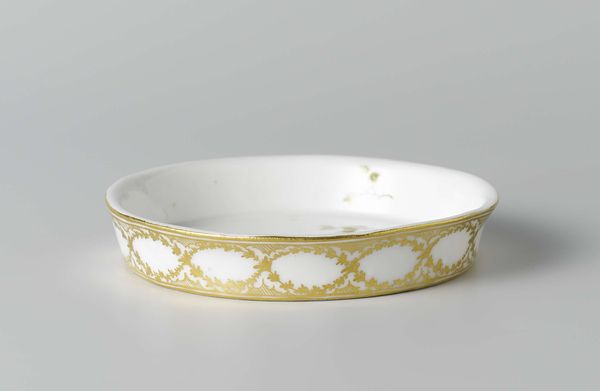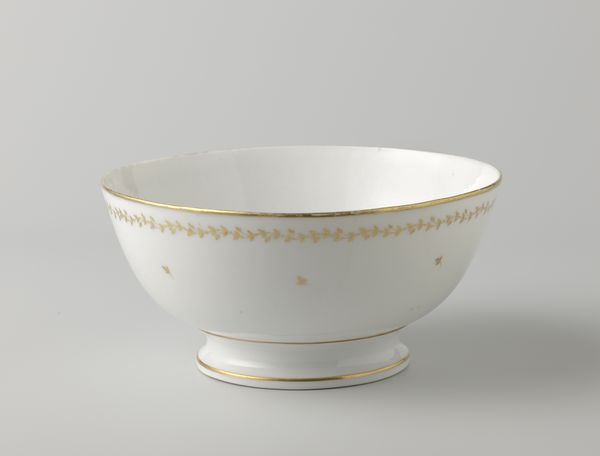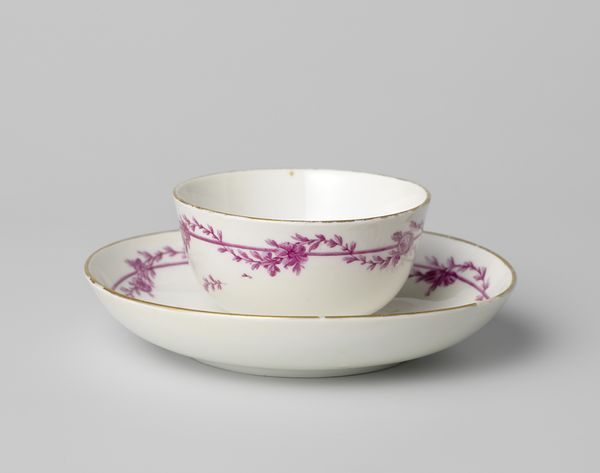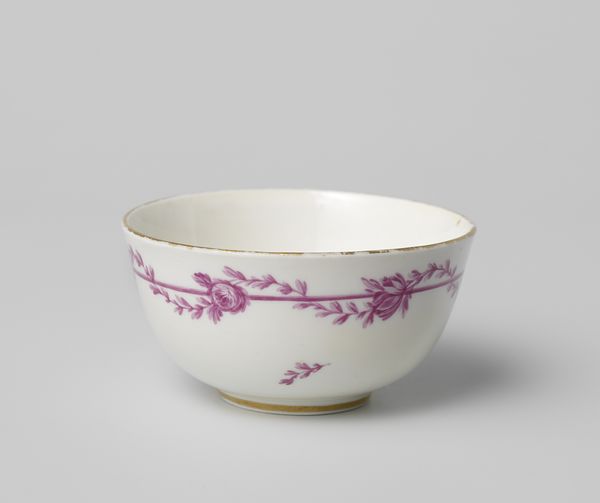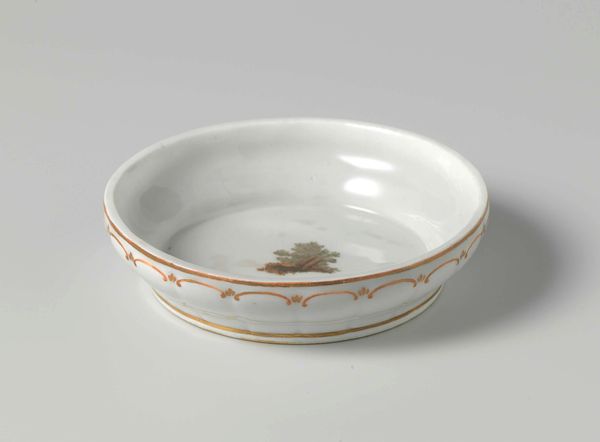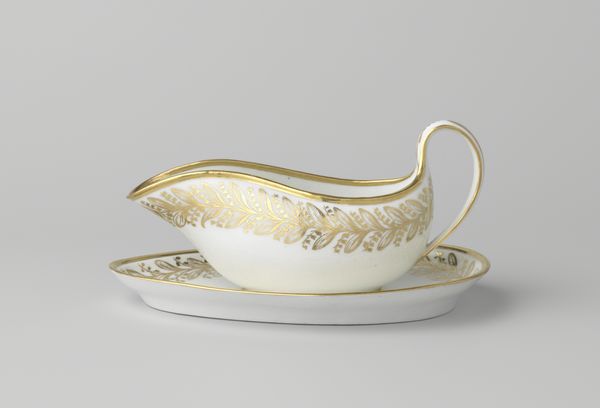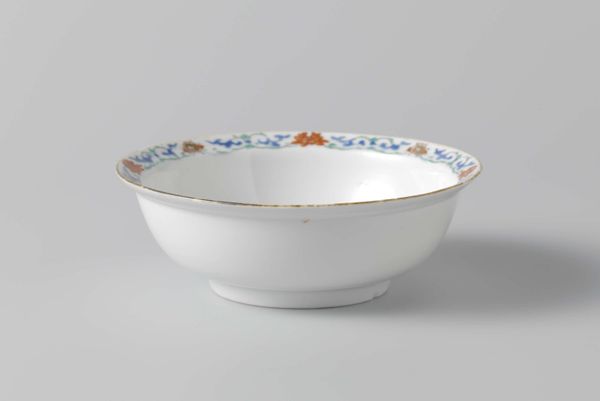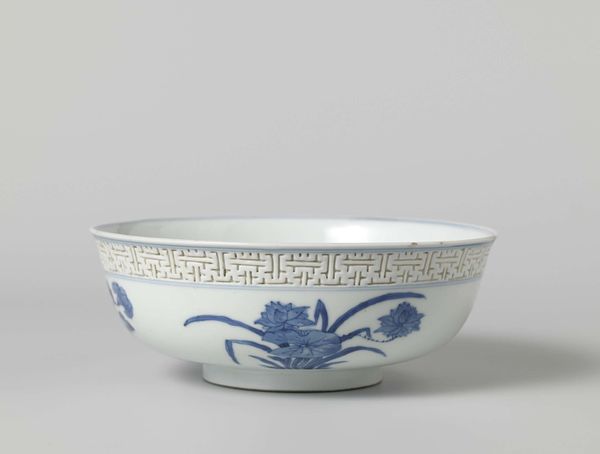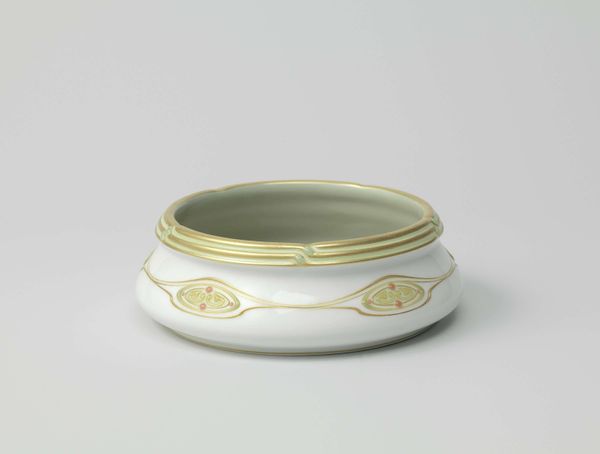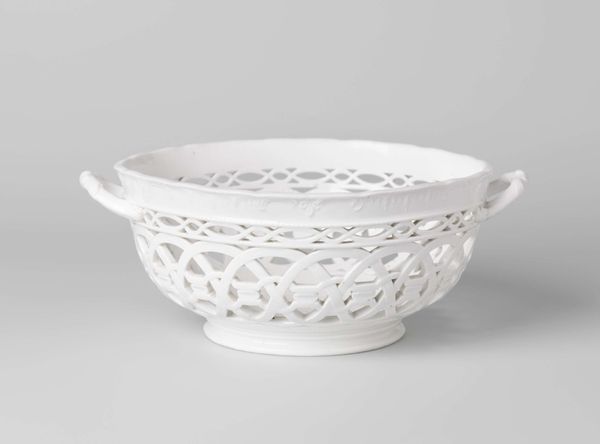
Dish with the coat of arms of Hendrik Peter Godfried Quack and Isabella Gertraud von Carnap c. 1790 - 1800
0:00
0:00
Dimensions: height 4.5 cm, width 25.7 cm, depth 13.2 cm, width 18.3 cm, depth 8.7 cm
Copyright: Rijks Museum: Open Domain
Curator: This beautiful object is a porcelain dish crafted around 1790-1800. It’s held here at the Rijksmuseum. We know it as "Dish with the coat of arms of Hendrik Peter Godfried Quack and Isabella Gertraud von Carnap". It reflects a delicate Rococo style. Editor: It’s immediately striking, isn’t it? The refined gold decoration against that stark white porcelain feels almost austere, yet simultaneously luxurious. There's such controlled ornamentation and sense of privilege and power through display. Curator: Precisely! It was likely commissioned to commemorate the marriage of Hendrik and Isabella. These personalized dishes weren't mere dinnerware. They were powerful symbols of status, meant to be displayed. The coats of arms are assertions of lineage and belonging within the elite circles. Editor: It brings up questions about access. Think about the labour required to produce something like this, compared to who gets to benefit. Who's crafting this gorgeous floral ornamentation? How were Hendrik and Isabella implicated in systems of extraction of material and human labour for the sake of aesthetic embellishment of everyday life? Curator: Absolutely, understanding who consumes and produces such goods reveals larger economic systems and social hierarchies. In this case, porcelain was considered as ‘white gold’. Owning such things broadcasts global participation in trade with China, so to own an item like this immediately boosted your public persona and your market standing. Editor: I do wonder if the intended audience understood its economic implications beyond just seeing ‘expensive pretty thing’, or even cared about it that way, considering, say, broader access to global market participation... Curator: No doubt. Often these objects gained value over time as symbols of dynastic aspirations as tastes changed, impacting social status. Public institutions have changed access dramatically for global access, for viewing and research of precious objects today! Editor: Absolutely, museums as institutions change the way objects like these are understood over time, not simply admired but hopefully critically assessed in context, impacting the way new audiences relate to its complicated history.
Comments
No comments
Be the first to comment and join the conversation on the ultimate creative platform.

